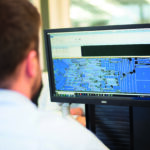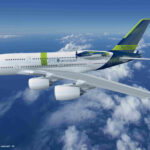The Single European Sky (SES) initiative is a vital tool on the path to decarbonising aviation, according to Simon Weiss, head of aviation at energy company Mabanaft.
Speaking at the AIRTEC aerospace fair in Augsburg, southern Germany, Weiss said: “Europe has 37 air traffic control centres. For every country there’s a different responsibility.
“Creating a new Single European Sky to defragment this airspace would lead to a potential CO2 reduction of 18 million tonnes per year.”
The EU launched the SES initiative more than a decade ago with the objective of reducing the fragmentation of air navigation services in Europe and to improve the performance of the ATM system.
When fully realised, IATA says the SES will handle more than 20 million flights per year. Aircraft will arrive within one minute of the planned arrival time regardless of weather conditions, and travel will be reduced by 10 minutes on average.
A total cost reduction across European ATM of €9 billion per annum will be achieved through structural and operational improvements.
Better procedures and flight profiles will provide €6 billion of fuel savings, while additional capacity, more efficient routes, fewer delays, fewer cancelled flights, and lower fuel burn will considerably increase the efficiency and economy of air transport.
In addition to the SES, Weiss said a range of measures were needed including adoption of sustainable aviation fuel (SAF).
“Is SAF the silver bullet to solve the emissions problem? Absolutely not,” he said.
But Weiss said SAF was still an important tool, not least because it is a so-called drop-in fuel (one which can be automatically incorporated into existing airport fuelling systems), therefore not requiring modifications to existing infrastructure or aircraft.
“We can use this supply chain to fully and quickly distribute renewable fuels to a large consumer base across Europe,” he said.
Subscribe to the FINN weekly newsletter
You may also be interested in:
IATA: European Air Traffic Control Performance is a ‘concern’

